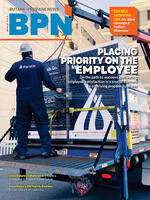
You’ve stepped into a new position at CHS. What are your goals in this new role?
As vice president of our propane business, I am focused on maximizing our operations to provide even greater efficiencies and more comprehensive support for our customers. We’re zeroing in on opportunities where we can fully harness our resources across the company and bring that access to our customers to help them grow. We’re dedicating new levels of support to bridge gaps, help make connections and come along as a consultative partner, starting with a new marketing program to connect our customers with the tools they need to reach and target new markets.
I’m also proud to continue contributing to safety and training initiatives at the industry level through our collaborations with the Propane Education & Research Council (PERC) and the National Propane Gas Association (NPGA). Safety is one of our core values at CHS, and with our cooperative model we’re in a unique position to listen and advocate for what co-ops and retailers are experiencing across rural America. It’s a voice the industry doesn’t typically get to hear from, so it’s impactful that we can help bring their local perspectives to work happening at the national level.
What do you find to be the biggest challenges facing the industry in the years ahead?
Volatility in energy pricing and changes in the supply chain are certainly a factor, but without a doubt, driver shortages will remain the sticking point going forward. When we see that push and pull in the markets, we have to analyze closely to understand, “Is this a situational, one-time occurrence or a long-term, systemic trend?” With long-term issues, the question becomes, “Do we need to create more product, or do we need more infrastructure in the form of rail supply and drivers to get product out where it’s needed most?”
Market volatility and our industry’s demand for drivers go hand-in-hand, but in the search for solutions, we’re facing an uphill battle when it comes to sourcing skilled, trained labor.
From your seat, where do you see possible solutions?
Data from the U.S. Department of Labor shows us that the driver shortage won’t be going away anytime soon, and it’s unlikely we’ll find one end-all solution. An industry-wide push to boost infrastructure could help. CHS recently launched a new rail ship terminal in Yuma, Colorado, to alleviate supply shortages and cut down the hundreds of miles drivers needed to cover in eastern Colorado, western Nebraska and the western Kansas watershed. Similar investments can help lift the burden.
Recruitment is an avenue we can always dedicate more resources to across the industry, but training can also pose a barrier in the hiring process. At CHS, we’ve worked heavily with PERC to build out a renewed, accredited training curriculum that can be delivered in a quicker, more efficient way and get drivers through the program in a more timely manner. We’ve also helped consult with NPGA as they’ve rethought their Entry-Level Driver Training program. Pushes like these are all an effort to get drivers trained up and ready for the road. Training may not be the single silver bullet here, but it’s an important piece of the puzzle.
Where do you see new opportunities on the horizon?
Momentum is growing in autogas, especially as low-carbon policies and adoption of energy alternatives pick up speed. New tax credits and incentives are providing some renewed enthusiasm and room for growth in that space. From our position, we’ve helped a number of organizations take advantage of the funding available to convert their buses and trucks to run on propane. We’ve worked with key vendors to connect the dots and helped marketers set up their dispensers and storage. We are seeing firsthand not just how the interest, but the infrastructure — which can often be a barrier for entry to organizations that are curious about making the switch — is growing across rural America. It’s exciting to see there’s plenty of potential for growth in the years ahead.


